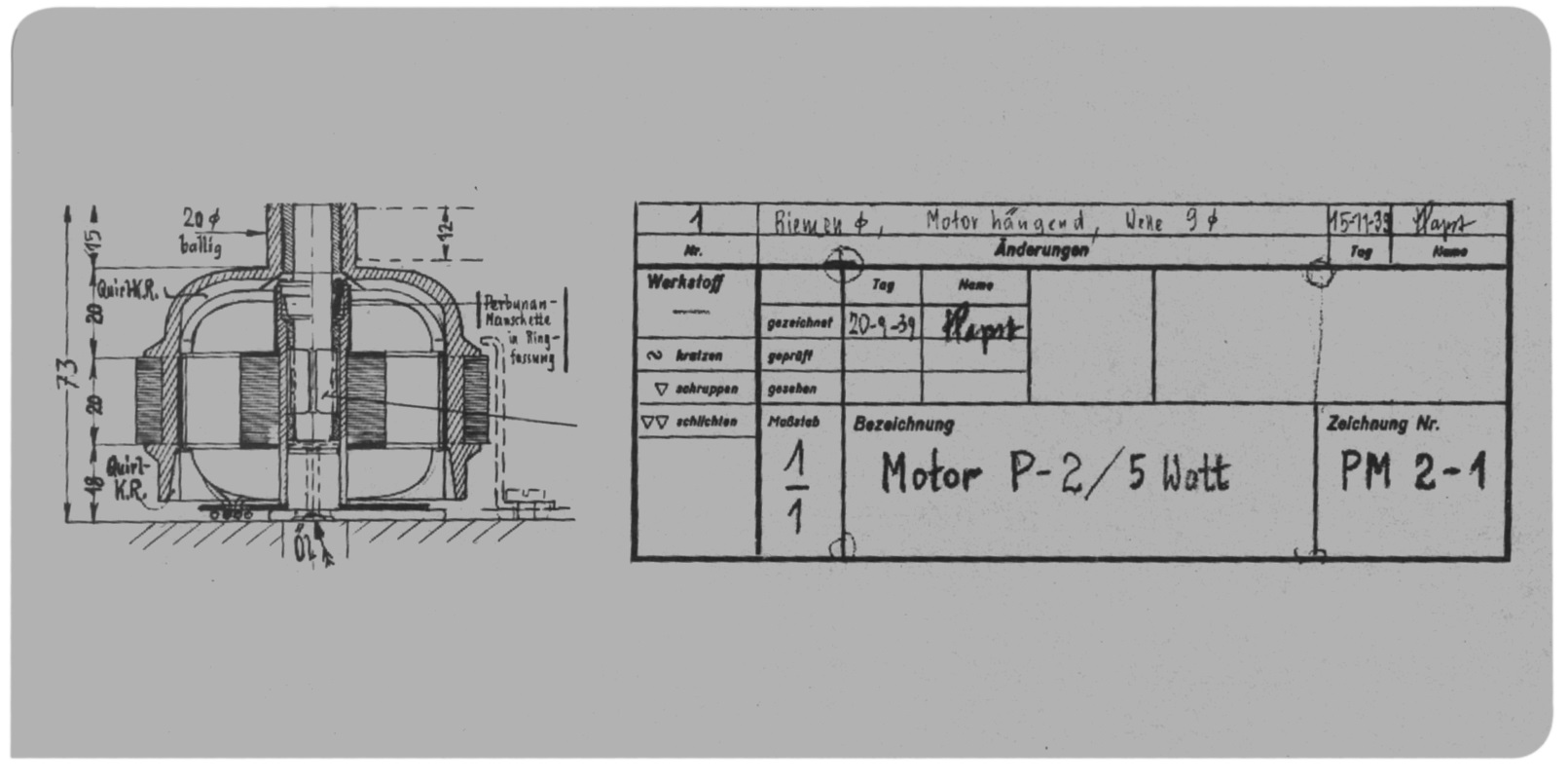External Rotor Motor
–
In 1932 Hermann Papst already applied for the basic patent of the so called “External Rotor Motor”; an invention he improves constantly. Originally he was inspired to build a new motor by a competition of the aluminium head office in Paris, which is specialized in the growing usage of aluminium in electro-technical devices. In pursuit of this task he used the basic patent for the External Cage in an aluminium die cast on the external rotor motor principle and introduced it to drive technology.
A sketch of the external rotor motor, that was developed by Hermann Papst
and was manufactured in 1939 in small volume.
–
The external cage motor (designed after the principles of an external rotor motor) possesses special advantages in many aspects and has prevailed more and more as an economic alternating current small AC drive. It became known as the “PAPST-Motor”. The bell-shaped external rotor rotates often worked as a drive hub-around the inner stator and as an external induction rotor features a good heat dissipation.
The Motor mass is located on a large radius. Thus, a high inertia for a steady run is provided. The enlargement of the air gap diameter also provides for a greater air gap surface and respectively to a higher torque as well as to the reduction of iron’ and copper losses. The external rotor principle creates the possibility to arrange the bearings in a common, exactly aligned tube. This leads not only to a higher precision of a construction, but with a slide bushing construction also to a common lubricant reservoir which is useful in terms of a longer durability and an especially steady run.
The production of External Rotor Motors strongly increased since 1950 through the application as direct drives in tape recorders, typewriters, accounting machines, medical- and lab technology, and its broad application in axial fans, which are very important for the cooling of electronic devices. Through the introduction of video- and signal recoding, the application of the External Rotor principle (nearly exclusively used as electronically commutated DC motor) increased worldwide to about 1 billion motors and fans in 2000. The external rotor motor was the financial basis of the “Papst-Motoren KG”.
–
The Cooling of External Rotor Motors
The surrounding part of the motor is equipped with fissures, which generate local turbulances, to achieve a better heat dissipation for the External Rotor Motor. In the same casting step, in which the cooling fins bases are formed, ventilator blades are cast onto a rotor housing. The rotor cage – and mantle rings are arranged concentrically and connected through radial cooling/fan fins. By penetrating the closed mantle surface of the external rotor housing, canals are created, which cause a radial air flow and lead to an intensive cooling of the housing.
Left side: Design Sketch of an internal rotor motor with external cage
Right side: Sketch of the external rotor motor with rotating cage. Through this invention
Hermann Papst became the pioneer of modern drive technology




